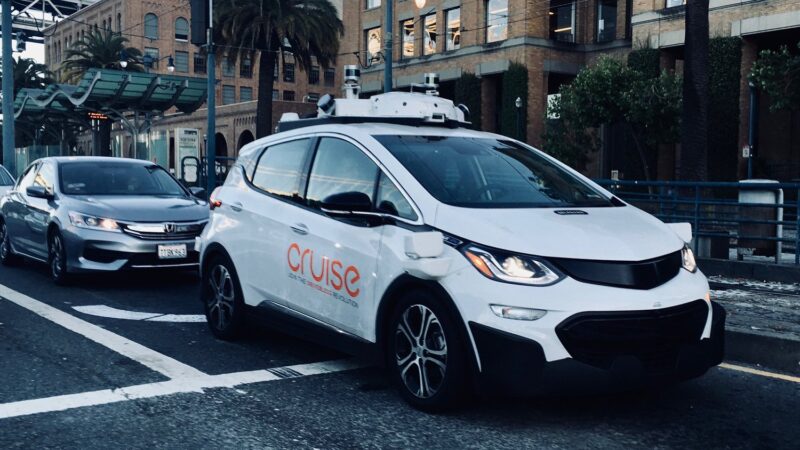In his book Autonorama, Peter Norton outlines a paradox inherent to autonomous vehicles: “Will it be risk averse, and drive so cautiously it frustrates its human occupants? Will it take chances, thereby offering its passengers a better ride?” According to Norton, if autonomous vehicles are programmed to be scrupulously deferential to risk, they become a mediocre product, out-performed by other modes of transportation. Conversely, the better programmed they are to take chances—whether with speed limits or obstacles—the greater the probability is that they will endanger other road users.
This article was written by Asia Mieleszko and originally published by Strong Towns.
For San Franciscans, the questions posed in Norton’s book are no longer theoretical. The city has spent the last half year grappling with how the latest fleet of autonomous vehicles negotiates risk on city streets. With evidence of autonomous vehicles disobeying traffic laws piling up, some residents are getting ahead of tragedy by protesting their proliferation. And according to one activist group, all it takes to disable a driverless car is placing a cone on its hood.
In a now-viral TikTok, Safe Street Rebel, a decentralized and largely anonymous activist group fighting for “car-free spaces, transit equity, and the end of car dominance,” detailed the demonstrated hazards of “robotaxis” and provided step-by-step instruction for immobilizing them. They encouraged incensed San Franciscans to follow suit and share evidence of the disarmed driverless cars in what was dubbed, “The Week of Cone.”
“We’re not damaging anyone’s property,” one of the group’s organizers told The Guardian. “It’s very fixable, but it is a funny and effective tactic that has really resonated.” The video came out in advance of a vote that would cement the ability for autonomous vehicles to expand their operations across the peninsula.
As of publication, the area’s principal autonomous vehicle companies, Waymo and Cruise, operate a limited ride-hailing service. The former only possesses the authorization to charge for rides with a “safety driver” present behind the wheel and both effectively restrain their services to downtown San Francisco. However, the two companies have been pushing the California Public Utilities Commission (CPUC) to allow driverless ride-hailing to operate 24/7. The vote, originally scheduled for July 13, has been delayed until August at the request of a CPUC commissioner.
Since May 2022, the city’s fire department registered at least 66 incidents wherein autonomous vehicles interfered with firetrucks, according to The Washington Post. In one case, an autonomous Cruise vehicle “created an obstruction for a San Francisco Fire Department vehicle on its way to a 3-alarm fire,” and in another, the autonomous vehicle “ran over a fire hose that was in use at an active fire scene,” according to The Verge.
The California Department of Motor Vehicles has logged nearly 75 collisions involving autonomous vehicles in 2023 alone. Those collisions include one referenced in Safe Street Rebel’s video, in which an autonomous Waymo vehicle killed a dog. A “safety driver” was present in that instance.
Perhaps the greatest testament to discontent with and distrust of autonomous vehicles is how every snapshot of their dysfunction instantaneously goes viral on social media. Media of vehicles inexplicably stalling, generating traffic jams, being confused by construction, and nearly running pedestrians over have racked up hundreds of comments and even more concern over the proliferation of the technology. “They’re not ready for prime time,” San Francisco Fire Chief Jeanine Nicholson told the Los Angeles Times.
When it comes to city streets, Safe Street Rebel hopes prime time never comes. They refute Waymo and Cruise’s promises that autonomous vehicle technology will alleviate congestion and reduce crashes, instead noting the opposite is already in effect. Furthermore, concentrating on autonomous vehicle technologies is not only a costly way to invent new risks, but it fundamentally misses the opportunity to orient our cities away from car dependency. And as Chuck Marohn put it, “Automated vehicle technology will do nothing to make our streets better places to be and, if we continue to have blind faith in it, has the very real chance of setting our cities back another generation.”





